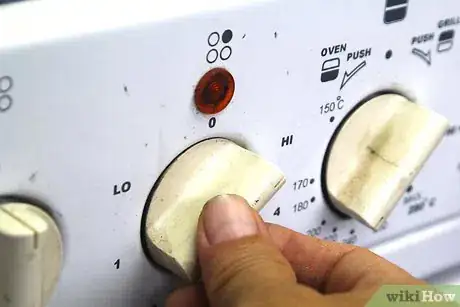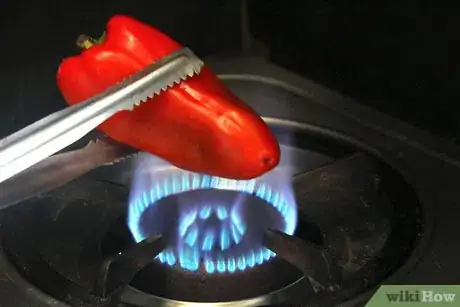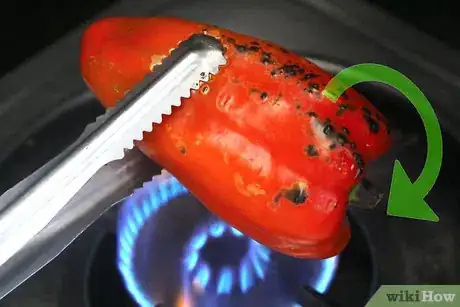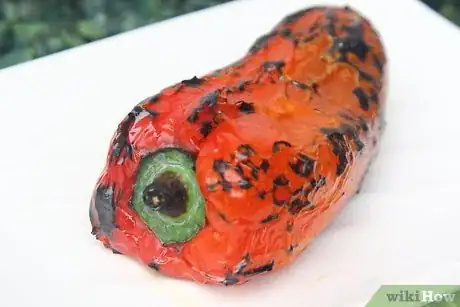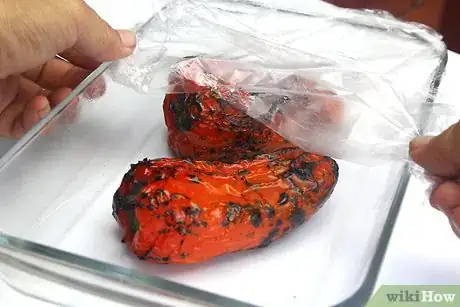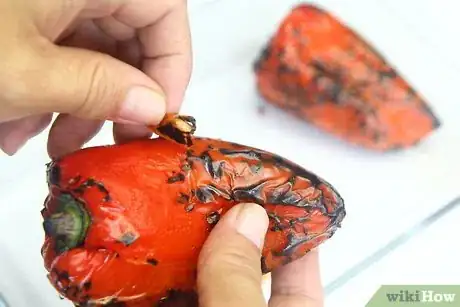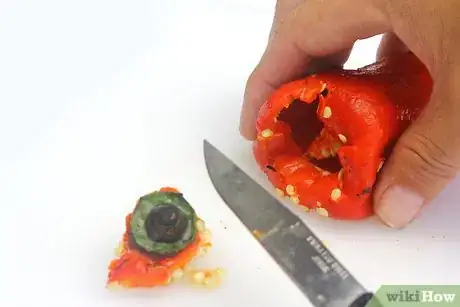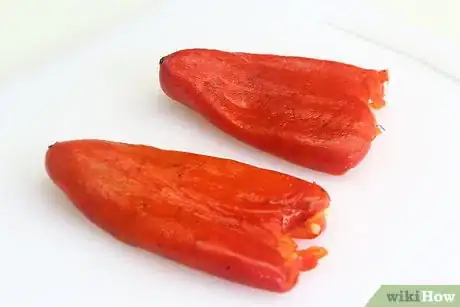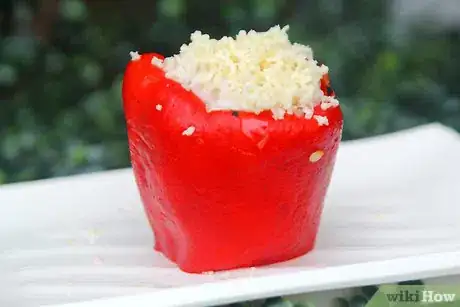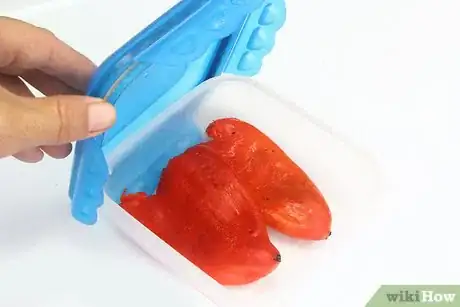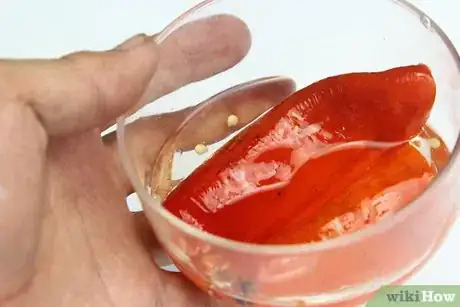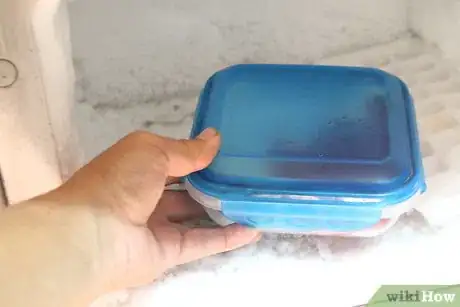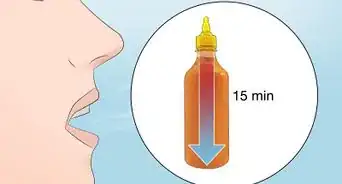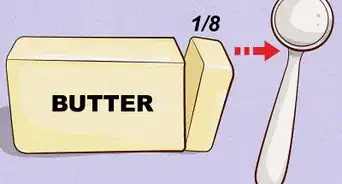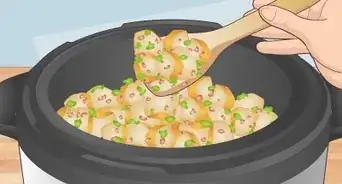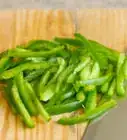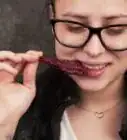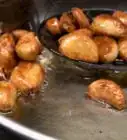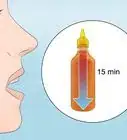This article was co-authored by wikiHow Staff. Our trained team of editors and researchers validate articles for accuracy and comprehensiveness. wikiHow's Content Management Team carefully monitors the work from our editorial staff to ensure that each article is backed by trusted research and meets our high quality standards.
There are 7 references cited in this article, which can be found at the bottom of the page.
This article has been viewed 185,300 times.
Learn more...
Roasted peppers have a rich and deep flavor that's ideal for salads, sandwiches, pastas, dips, and many other dishes. One of the simplest ways to roast a pepper is over the flame from a gas stove, and this works for a wide variety of peppers, including bell peppers and chilis, such as jalapenos, habaneros, and more. The trick is to leave the pepper on the flame until it's completely charred, and then to steam the pepper so you can easily remove the skin. After that, you can use the roasted pepper right away, or store it for later.
Steps
Charring the Skin
-
1Wash the pepper. Hold the pepper under running water and scrub the outside with a vegetable brush or clean cloth. Scrub the area where the stem meets the fruit as well, as the stem can harbor bacteria. Pat the pepper dry with a clean towel and set it aside.[1]
-
2Turn a gas burner to high. Push in the knob for the gas burner and turn it to ignite. When the flame ignites, turn the knob to the highest setting to increase the heat. Let go of the knob.
- You can also roast peppers on the flame from a barbecue, outdoor grill, or open fire.[2]
Advertisement -
3Place the pepper on the flame. Pick up the pepper with a pair of metal tongs. Transfer the pepper to the burner, and put it down in the middle of the flame.[3] It may crackle and pop a little, but this is completely normal.
- You can also use a long-handled fork or metal skewer to move the pepper around.[4]
- Avoid using a wooden or plastic utensil to move the pepper, as it may catch fire or melt.
-
4Rotate the pepper as it roasts. After a minute, use the tongs to rotate the pepper a quarter turn to char the next side. Watch the pepper closely as it roasts so it doesn't burn. Turn the pepper a quarter turn every minute until the skin is blackened, bubbled, and charred.[5] The whole process will take about five minutes.
- Even though the skin on the outside of the pepper is charred, the flesh inside will be juicy, tender, and perfectly cooked.
-
5Remove the pepper from the flame when it's blackened. When the pepper skin is bubbled and charred, use the tongs to remove it from the burner. Push in the knob and turn it to the off position to turn off the heat.[6]
Cleaning the Pepper
-
1Transfer the pepper to a heat-safe glass bowl. Cover the bowl with a lid or sheet of plastic wrap to trap the heat and steam from the hot pepper. Leave the pepper to steam for 10 to 15 minutes. This will loosen the skin and make the pepper easier to peel.[7]
- Instead of a bowl, you can also steam the pepper in a sealable plastic bag.
-
2Peel off the skin. Once the pepper has had time to steam, remove the lid or plastic from the bowl and take out the pepper. Allow the pepper to cool for a few minutes. When it's cool enough to handle, use your fingers to peel the skin from the flesh of the pepper.[8]
- If any of the skin is stubborn, use a paring knife to carefully slice it from the flesh.
-
3Remove the stem and seeds. Use a small knife to cut around the stem of the pepper to loosen it from the flesh. Remove and discard the stem. Open the pepper where you removed the stem and use a spoon to gently scrape the seeds from the inside. Be careful to leave as much flesh on the pepper as possible.[9]
-
4Slice the pepper or leave it whole. Once the seeds have been removed, the pepper is ready to eat or store for later. You can leave the pepper whole and intact if you want to stuff it, or slice it into smaller pieces for other uses. Roasted pepper slices are great for sandwiches, pizzas, and other dishes.
Using and Storing Roasted Peppers
-
1Make stuffed peppers. When the peppers are still warm from roasting, stuff them with cooked rice, quinoa, other vegetables, ground meat, or another favorite stuffing. Top the pepper with grated cheese and bake in a 350 °F (177 °C) oven for about 20 minutes, until heated through and bubbling.
-
2Pair them with cheese. Roasted peppers can be eaten with a variety of cheeses. They go especially well with tangy cheeses, such as goat cheese, brie, or camembert.[10] There are many ways you can pair peppers and cheese, such as:
- On sandwiches
- On pizzas
- With crackers
- On toast
- In a soup
- Mixed with a creamy pasta
-
3Refrigerate them for later use. Roasted peppers can be stored in the refrigerator for several days if you have leftovers. Transfer the whole or sliced peppers to an airtight container before putting them in the refrigerator.[11]
-
4Store them in oil. To preserve the roasted peppers for longer than a few days, pack the slices or whole peppers into a sterilized mason jar. Cover the peppers with olive oil. Put the lid on the mason jar and seal the lid with the ring. Store the peppers this way, unopened, for up to two weeks.[12]
-
5Transfer them to the freezer for longer storage. Place the peppers in a freezer safe container or freezer bag. Push out as much air as possible and seal the container or bag. Place the peppers in the freezer and store for a few months.[13]
- It's important to remove the air from the container, as this will help to prevent freezer burn.
Warnings
- Don't touch your eyes after handling spicy peppers, as the oil from the pepper can cause burning and irritation.⧼thumbs_response⧽
References
- ↑ http://www.geniuskitchen.com/recipe/roasted-peppers-how-to-roast-a-pepper-on-a-gas-range-51522
- ↑ https://www.thekitchn.com/quick-tip-how-to-roast-peppers-60699
- ↑ https://www.epicurious.com/expert-advice/best-roast-chiles-peppers-stovetop-gallery/list
- ↑ http://www.geniuskitchen.com/recipe/roasted-peppers-how-to-roast-a-pepper-on-a-gas-range-51522
- ↑ http://www.simplyrecipes.com/recipes/how_to_roast_chile_peppers_over_a_gas_flame/
- ↑ https://www.epicurious.com/expert-advice/best-roast-chiles-peppers-stovetop-gallery/list
- ↑ https://toriavey.com/how-to/roasted-bell-peppers/
- ↑ https://www.thekitchn.com/quick-tip-how-to-roast-peppers-60699
- ↑ https://www.epicurious.com/expert-advice/best-roast-chiles-peppers-stovetop-gallery/list
About This Article
To roast peppers on a gas stove, start by washing your peppers and turning on a gas burner to high. Then, pat the peppers dry and hold one over the flame using metal tongs, a long-handled fork, or a metal skewer. Next, after 1 minute, rotate the pepper a little and roast it for another minute, repeating the process until you've been roasting the pepper for about 5 minutes. Finally, once the pepper's skin is bubbled and charred, transfer it to a plate and repeat with the rest of your peppers. To learn how to clean and serve your roasted peppers, scroll down!

